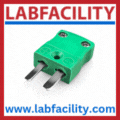
Posted to News on 5th Dec 2006, 22:13
How to specify robot cells
Stirling Paatz of Barr & Paatz explains how to specify industrial robot cells and names his preferred suppliers of robots and auxiliary equipment.
Although global statistics suggest that Britain is still lagging behind other advanced nations in the uptake of modern robotics technology, a combination of falling prices, increased relative performance and smaller installation footprints is prompting more UK manufacturers and processors to invest in multi-axis industrial robots.
Recent research suggests suggests that, while demand from the automotive industry (traditionally the dominant robot marketplace) is beginning to decline, more mainstream sectors are adopting robots in ever-increasing numbers - such as food and beverages, electronics, pharmaceuticals, laboratories, packaging, and general processing. A recent Frost & Sullivan report also indicated that small and medium-sized companies in food processing, life sciences and the plastics industry are using robotics more often for materials handling. Underlying reasons for this include increasing labour costs, stricter safety regulations, hygiene requirements, and the need for flexible manufacturing processes and shorter lead times.
Flexible automation, in the form of industrial robots, lends itself to a whole range of process industry applications, especially picking products such as frozen food, medical products, laboratory samples or perfume bottles from conveyor lines, packing them into boxes or containers, sealing or film wrapping, then placing them onto pallets for despatch. Machine minding tasks, cutting and finishing duties, mould loading/unloading, gluing, dispensing, painting and assembly are other processes that can be carried out precisely, repetitively and at high throughput rates by robot work cells. Furthermore, the decreasing cost of robot technology means that the scale of investment need no longer be a deterrent, while the ability to reprogram and redeploy robots for completely different applications increases the ROI.
Identifying the potential applications and cost benefits is one thing; however, choosing the right robot for the task and building it into a fully functioning automated work cell is quite another.
That is precisely the role of specialist, independent robot system integrators like Barr & Paatz, so I thought it might be instructive to provide an overview of the process we go through when specifying robots and peripherals for customer applications. Admittedly, this involves considerable work with spreadsheets, simulation software, CAD/CAM systems, 3D modelling tools and sophisticated project management programs, but the basic steps are relatively straightforward.
Robot geometry
The first step is to consider the specific application and ascertain the type of workpiece or component manipulation required, in order to determine the geometry of the robot. For more routine assembly, packaging, palletising, machine loading or pick-and-place duties, we would opt for a four-axis or SCARA (Selective Compliant Assembly Robot Arm) robot, which has two rotary joints at the 'shoulder' and 'elbow', a linear joint that provides the vertical positioning, and a simple wrist joint. They are generally faster and offer a good price/performance ratio, but have a more restricted, quasi-cylindrical work envelope and less functionality than a six-axis robot.
As the name implies, the six-axis or 'articulate' robot has six joints or 'degrees of freedom' (DOF), to control the location and orientation of the end-of-arm tooling, closely resembling the action of the human arm and wrist. With a larger, almost-spherical operating envelope and the capacity to reach over and around obstructions or twist and tilt the part, the six-axis robot is suitable for complex part removal/installation, processing, paint spraying and machine tending tasks.
At this point, it is worth mentioning in passing the five-axis robot, which has a similar articulate geometry, but without the rotating wrist joint; this actually offers little more functionality than a SCARA and, given the price differential, means that we rarely specify a five-axis machine. Similarly, a conventional three-axis Cartesian or gantry robot has linear motion in only three directions, requires a large volume in which to operate and lacks the versatility of true 'flexible automation' again, in most cases a four-axis robot will do the same job better at a comparable price, whilst having the flexibility for redeploying onto secondary robotic applications, unlike the fixed geometry of a Cartesian type.
Machine manufacturer
Specifications for industrial robots focus on the number of axes, load capacity, reach and the X, Y and Z axes travel, as well as repeatability. So having determined whether it is four-axis or six-axis geometry, we consider how heavy is the workpiece/component and any associated tooling, such as a gripper or vacuum, how much distance has to be covered in the process and to how many different places within the operating envelope. This identifies how long the robot arm has to be, or reach, and the nominal and maximum load capacities. Then it is a question of identifying which manufacturer offers suitable candidate machines.
Which robot manufacturer is usually decided on price/performance, although if the customer has previous experience with particular equipment and/or existing installations, that can be an important factor. After sixteen years in the automation industry, we have refined our choice down to three class-leading makes that cover most applications: Mitsubishi, Stubli - including former Bosch Rexroth models - and Comau. With over 30,000 installations worldwide, Mitsubishi is a market leader in small-scale robots, with SCARA models handling payloads up to 15kg and articulated-arm machines up to 12kg. Stubli mainly covers the middle of our range, extending up to 130kg, including former Bosch Rexroth SCARA models, and its excellent 24-hour field service means this brand is excellent for critical manufacturing environments. Although covering most ranges, we consider Comau's main strength in our product portfolio to be handling heavier payloads in a compact footprint, including the world's most powerful robot capable of lifting 800kg.
Further options, where available, include floor-, wall- or ceiling-mounting, to allow for any space constraints and optimise manoeuvrability, additional electronic protection to IP67 and special versions for cleanroom or paintshop applications. As we shall see later, end-of-arm connections for electrical and pneumatic peripherals and the means for internally mounting cables are further considerations.
End-of-arm tooling
So far, so good - and you can perform the robot selection stage interactively yourself, on our own website at www.barr-paatz.co.uk.
Next is the configuration and specification of the gripper or end effector, also known as end-of-arm tooling (EOAT). This is a key area of robot system design, since the precision and repeatability of any robotic process depends on how the EOAT grips, holds, locates, lifts and releases parts. The most commonly used tooling is the gripper, which activates jaws or fingers to manipulate parts, mainly pneumatically but also electrically or hydraulically. The weight and dimensions of the workpiece, its shape, the specific process and permissible opening/closing times will determine factors like two or more fingers, spring-assisted action, friction coefficient and gripping force, although it should be remembered that acceleration imposed on the workpiece by the speed of movement should also be taken into account. Different jaw materials and facings, including thermoplastics and cushioning, accommodate workpieces liable to marking or damage and those with, say, knurling or serrations.
For flat or moulded sheet material like plastics, metal, glass, wood, cardboard, paper and even some electronic components, vacuum cups are best for workpiece handling and there are numerous permutations of cup material, profile and abrasion/heat-resistance to accommodate a range of surfaces. Magnetic and electromagnetic pick-ups provide further options if parts have a ferrous content and, ideally, a large flat contact surface. Whatever the EOAT employed, it is critical that the combined weight of the tooling, the gripped component and ancillaries like vacuum generators do not exceed the machine's payload capacity or create an unacceptable increase in cycle times, which is where our spreadsheet calculations come into play. Normally any associated cable and hose is channelled internally through the robot arm, with plug-in connections at the base, but sometimes external routing of lines and ducting is unavoidable and must be configured into the design calculations.
Guarding and transport
Sometimes overlooked in initial specifying, yet absolutely critical from a safety legislation angle, are working area guards or protective barriers. Robots are virtually silent and extremely fast in operation, so safety devices are needed to bar access to a potential source of danger and offer protection against the possibility of objects or liquids flying off the machine. For larger robot cells, we employ Bosch Rexroth's EcoSafe modular protection fence system, which allows us to comply with EN safety standards, exceeds minimum height requirements and cannot be removed without tools, even using force. For smaller cells, we integrate the guarding into the system, employing Rexroth's MGE modular aluminium profile system, stainless steel panels and shatter-resistant heavy duty polycarbonate viewing windows. In both instances mechanical and electrical interlocks and magnetically-locked access doors prevent working parts from operating while a hazardous zone is being accessed.
If operators do require regular access to the work cell, and where pallets or conveyors routinely pass through apertures in the guard barriers, an opto-electronic device will maintain safety integrity without constantly interrupting the robot cycle. Here, we tend to use Sick light barriers, light curtains and light grids for finger, hand and personnel protection; these use contact-free optical sender and receiver units and help make work processes safer, without inhibiting production.
In this context, I should also refer to material infeed/outfeed transport mechanisms, which have to be integrated into the guarded robot cell and are largely dictated by the weight and dimensions of the product itself, as well as required throughput speeds. We rely on conveyors, vibratory feeders, powered rollers and other transfer systems from the likes of Rexroth and Interroll, where necessary producing customised pallets and tooling to carry workpieces at the required orientation and frequency. In this context, we sometimes install 'machine vision' systems from market leaders Cognex, using cameras positioned over the conveyor belt or production line to analyse the shape of objects and determine whether they are in the correct orientation for robot pick-and-place processes; although it is fair to say that it is often easier and cheaper to use human intervention.
Human-machine interface
Human input, in the form of operator commands, diagnostics and programming changes, is incorporated into the robot cell by means of an HMI (human-machine interface). We favour the class-leading Pro-face touch-screen graphic operator interfaces, which help make complex processes easier to understand and simpler to control, helping to eliminate user error. Multi-layered protocols enable varying levels of access to software commands, from routine machine operation, through maintenance to re-programming, while there is in-built connectivity with robot controllers and plant-wide networks. Touch-screen controls are also clean and user-friendly, leaving mechanical push buttons for simple functions like guard resets.
Simulation
Finally, to prove the system, optimise the work cell layout and verify the reachability of all positions, we run the proposed configuration on our in-house COSIMIR 3D robot simulation package. This means that not only the robot action, but also its interaction with grippers and transport mechanisms are realistically simulated; all I/O electrical connections can also be mapped out and the tested programs downloaded directly into the robot controller. This process also reassures the customer that the work cell will perform the functions it is supposed to, at the throughput speeds required. It only remains for us to actually source the components and build the system, which is quite another story.
If all this sounds complex, then it is. However, a specialist robot system integrator like Barr & Paatz has all the multi-disciplinary skills and in-house software tools to perform these calculations and design functions cost-efficiently, as well as familiarity with and practical experience of all the hardware options, so it really does pay to involve experts at the earliest possible stage.
GLOBAL





